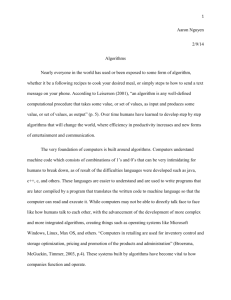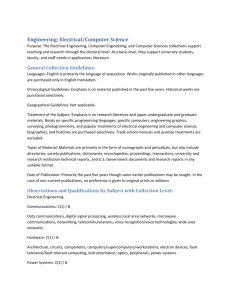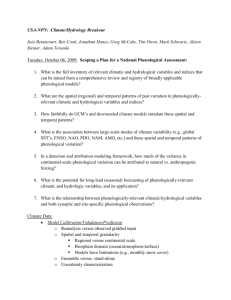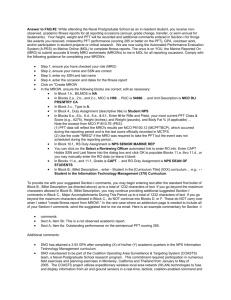Phytoplankton Phenology from Ocean Color Algorithms and Earth
advertisement
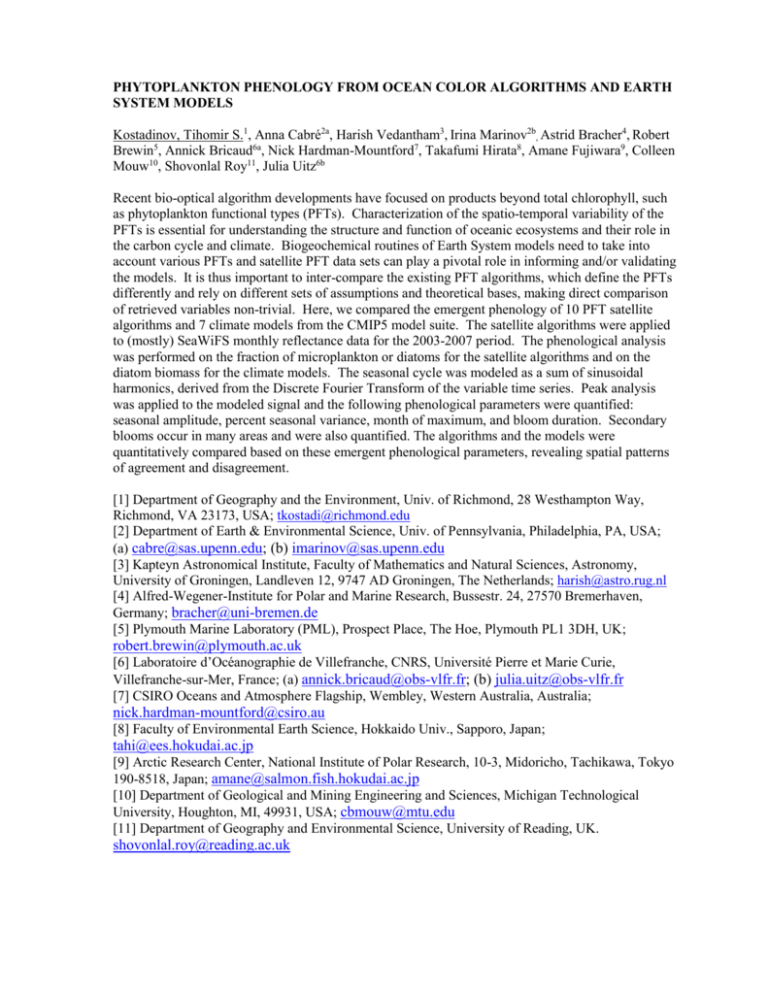
PHYTOPLANKTON PHENOLOGY FROM OCEAN COLOR ALGORITHMS AND EARTH SYSTEM MODELS Kostadinov, Tihomir S.1, Anna Cabré2a, Harish Vedantham3, Irina Marinov2b, Astrid Bracher4, Robert Brewin5, Annick Bricaud6a, Nick Hardman-Mountford7, Takafumi Hirata8, Amane Fujiwara9, Colleen Mouw10, Shovonlal Roy11, Julia Uitz6b Recent bio-optical algorithm developments have focused on products beyond total chlorophyll, such as phytoplankton functional types (PFTs). Characterization of the spatio-temporal variability of the PFTs is essential for understanding the structure and function of oceanic ecosystems and their role in the carbon cycle and climate. Biogeochemical routines of Earth System models need to take into account various PFTs and satellite PFT data sets can play a pivotal role in informing and/or validating the models. It is thus important to inter-compare the existing PFT algorithms, which define the PFTs differently and rely on different sets of assumptions and theoretical bases, making direct comparison of retrieved variables non-trivial. Here, we compared the emergent phenology of 10 PFT satellite algorithms and 7 climate models from the CMIP5 model suite. The satellite algorithms were applied to (mostly) SeaWiFS monthly reflectance data for the 2003-2007 period. The phenological analysis was performed on the fraction of microplankton or diatoms for the satellite algorithms and on the diatom biomass for the climate models. The seasonal cycle was modeled as a sum of sinusoidal harmonics, derived from the Discrete Fourier Transform of the variable time series. Peak analysis was applied to the modeled signal and the following phenological parameters were quantified: seasonal amplitude, percent seasonal variance, month of maximum, and bloom duration. Secondary blooms occur in many areas and were also quantified. The algorithms and the models were quantitatively compared based on these emergent phenological parameters, revealing spatial patterns of agreement and disagreement. [1] Department of Geography and the Environment, Univ. of Richmond, 28 Westhampton Way, Richmond, VA 23173, USA; tkostadi@richmond.edu [2] Department of Earth & Environmental Science, Univ. of Pennsylvania, Philadelphia, PA, USA; (a) cabre@sas.upenn.edu; (b) imarinov@sas.upenn.edu [3] Kapteyn Astronomical Institute, Faculty of Mathematics and Natural Sciences, Astronomy, University of Groningen, Landleven 12, 9747 AD Groningen, The Netherlands; harish@astro.rug.nl [4] Alfred-Wegener-Institute for Polar and Marine Research, Bussestr. 24, 27570 Bremerhaven, Germany; bracher@uni-bremen.de [5] Plymouth Marine Laboratory (PML), Prospect Place, The Hoe, Plymouth PL1 3DH, UK; robert.brewin@plymouth.ac.uk [6] Laboratoire d’Océanographie de Villefranche, CNRS, Université Pierre et Marie Curie, Villefranche-sur-Mer, France; (a) annick.bricaud@obs-vlfr.fr; (b) julia.uitz@obs-vlfr.fr [7] CSIRO Oceans and Atmosphere Flagship, Wembley, Western Australia, Australia; nick.hardman-mountford@csiro.au [8] Faculty of Environmental Earth Science, Hokkaido Univ., Sapporo, Japan; tahi@ees.hokudai.ac.jp [9] Arctic Research Center, National Institute of Polar Research, 10-3, Midoricho, Tachikawa, Tokyo 190-8518, Japan; amane@salmon.fish.hokudai.ac.jp [10] Department of Geological and Mining Engineering and Sciences, Michigan Technological University, Houghton, MI, 49931, USA; cbmouw@mtu.edu [11] Department of Geography and Environmental Science, University of Reading, UK. shovonlal.roy@reading.ac.uk




